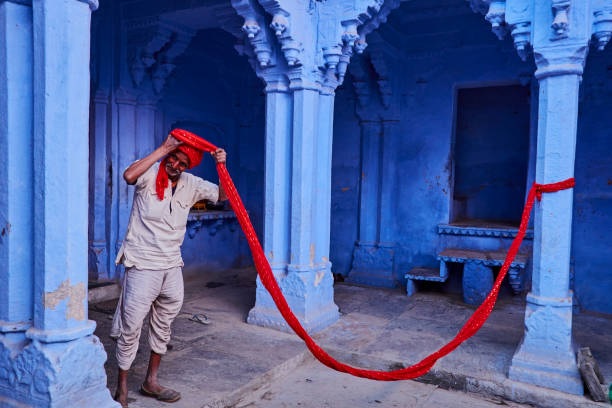
North India – Behind The Scenes
Experience India away from the tourist crowds and take a look behind the scenes of the most fascinating cities in the Indian states of Rajasthan and Uttar Pradesh. On this exciting insider trip, you will not only get to know the cultural highlights with fantastic fortresses, fairytale palaces and spiritual temples, but also the local people, their hospitality and the diverse cuisine of North India. Look forward to a culinary walk through Old Delhi, the fairytale Taj Mahal at sunrise, a small cooking class in your pretty boutique hotel in Jaipur and a night in a 300-year-old palace that is still inhabited and managed by the royal family today. There, in Chanoud, a jeep ride through the surrounding area awaits you as the sun sinks behind the Aravelli Mountains. Your trip ends in Varanasi, the holiest city of Hinduism, where the country awaits you in an intoxicating authenticity. A perfect dream trip from our India experts just for you.


Travel information
Itinerary: 14 days/ Delhi – Agra – Jaipur – Jodhpur – Chanoud – Udaipur – Delhi – Varanasi – Delhi
Highlight of the program:-
- Personal contact before, during and after your trip
- Take a look behind the scenes of Rajasthan and Uttar Pradesh
- Explore Delhi’s old town on a culinary walk
- Stroll through the medieval settlement of Nizamuddin Basti
- Get to know Agra beyond the tourist magnets
- Mix with the locals of Jaipur and try traditional delicacies
- See silversmiths, jewelry makers and other local artisans at work
- Pure Bollywood feeling: A film screening in India’s largest cinema
- Feel the magical atmosphere of Varanasi at an Aarti ceremony
Day 1: Arrival in India & culinary walk through Old Delhi
Namaste and welcome to India! Your journey begins in Delhi, where you will be met at the airport upon arrival and driven to your prebooked hotel in centre Delhi. Relax by the pool of your beautiful heritage hotel from 1903, which captivates with its colonial charm. In the evening, you will meet your tour guide for a culinary discovery tour through the winding streets of Old Delhi’s neighborhood, which are lined with numerous street food stalls. During your walk through Delhi’s old town, you can try various Indian specialties and let the special taste of Dilli cuisine melt in your mouth. Of course, you will also visit the moonlight square – Chandni Chowk – one of the oldest and busiest market places in the city, where you will experience the typical flair of an oriental bazaar. You can delve even deeper into everyday life on the streets and alleys of Delhi on a rickshaw ride that takes you on various routes away from the main routes to traditional shops and bazaars. You will then be brought back to your hotel with many new impressions. Overnight stay Maidens Hotel in Delhi.
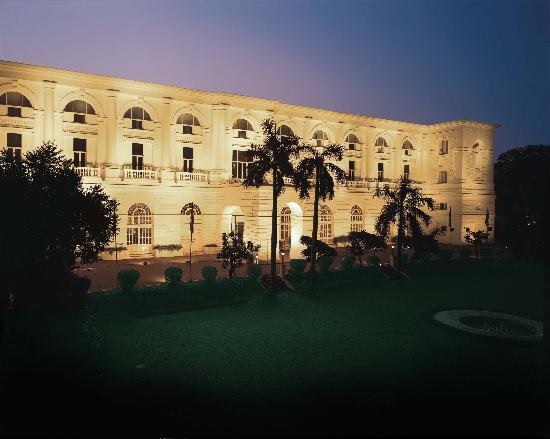
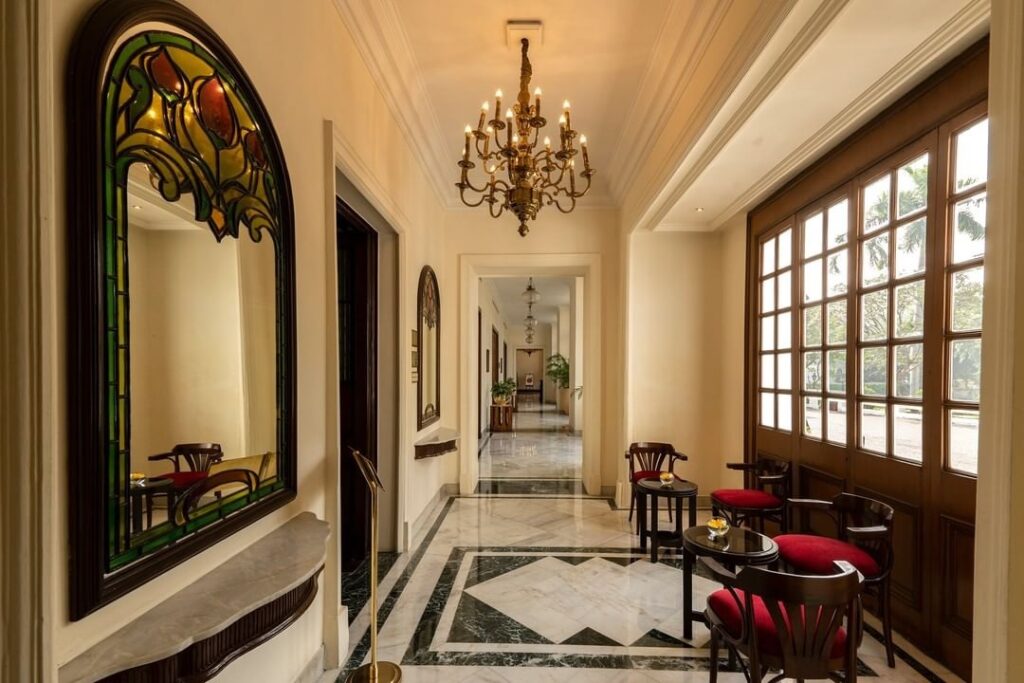
Day 2: A full day of contrasts
The imperial city of New Delhi with its wide avenues and imposing buildings forms a contrast to Old Delhi with its 1,500-year history. Built in 1931 by the British occupiers as a modern garden city, it now houses the government district, presidential residence and the national monument India Gate, which is modeled on the Arc de Triomphe in Paris and was built to commemorate World War I. But the urban area of New Delhi also has fascinating historical sights: such as the 72-meter-high Qutab Minaret and the Mausoleum of the Great Mughal Humayun, which is considered the architectural forerunner of the Taj Mahal. You will also visit the Gurudwara Bangla Sahib Temple, the largest Sikh shrine in Delhi. In the late afternoon, explore the medieval settlement of Nizamuddin Basti, which is located near the famous Humayun’s Tomb and is hidden from most visitors to Delhi. Together with a young, English-speaking local, you stroll through the narrow, winding streets of this old settlement, which is centered around the shrine of the Sufi saint Hazrat Nizamuddin Auliya, and gain unique insights into local traditions. Overnight in Delhi.
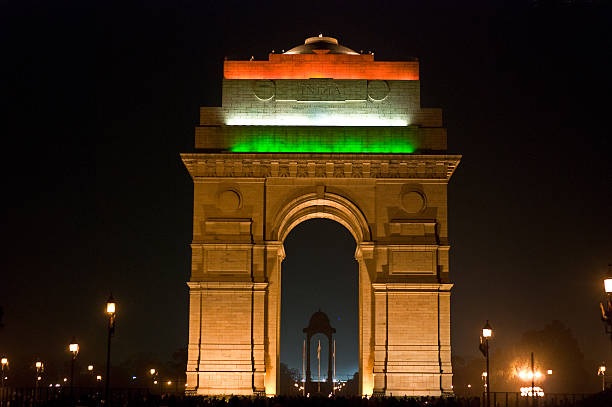
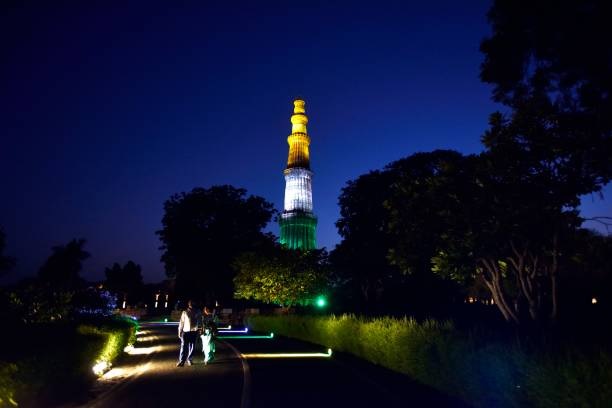
Day 3: Agra – Witness of the Mughal era & rural life
After an early breakfast, you leave Delhi and make your way to Agra. Once a small village on the banks of the Yamuna, the place developed into the second capital of the Mughal Empire thanks to the two great Mughal monarchs Akbar and his grandson Shah Jehan. The Mughals were not only rulers, but also great builders and you can still marvel at their architectural wonders for Agra and the surrounding area today. After checking in at the hotel, you will meet your tour guide, who will show you two of these buildings. You will visit the monumental Agra Fort, which, along with the world-famous Taj Mahal, is also a UNESCO World Heritage Site. Another architectural masterpiece is the Itmad-ud-Daulah Mausoleum, nicknamed the “Baby Taj”. It was completed two years before the foundation stone of the Taj Mahal was laid and served as an architectural model in many ways. In the afternoon, you will have the opportunity to get to know the city beyond the tourist magnets. With our local guide, you will discover sights that often disappear in the shadow of the Taj Mahal, learn more about the city’s rich history, hear anecdotes about the Mughal emperors and gain an insight into the region’s rural life in the village of Kachpura. Overnight in Agra hotel ITC Mughal.

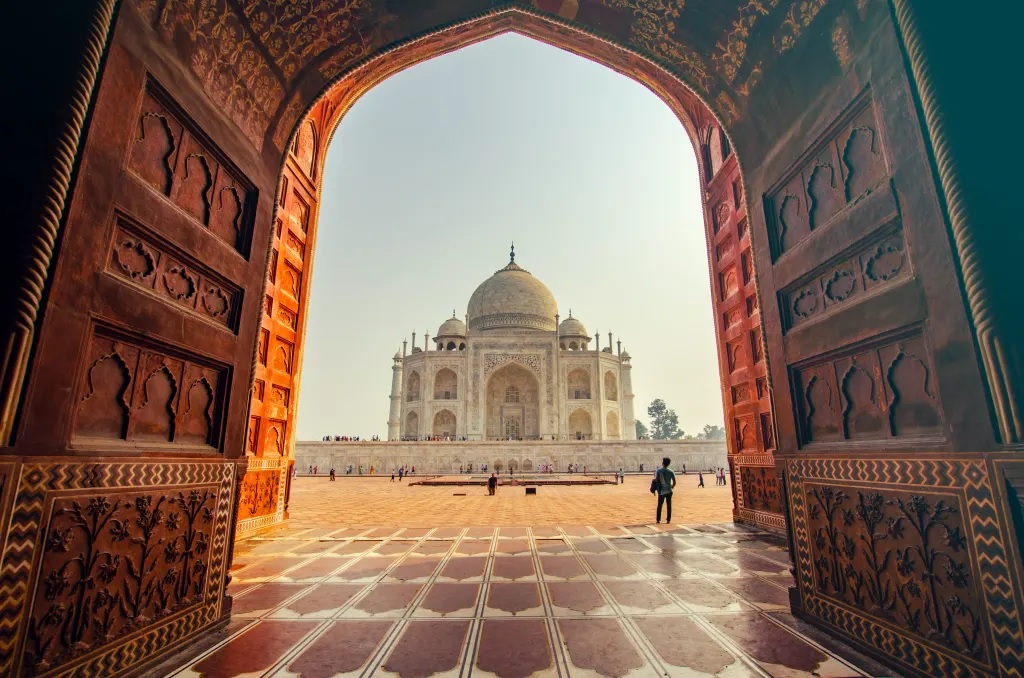
Day 4: The Taj Mahal at sunrise
Today the time has finally come: you will see the fairytale Taj Mahal with your own eyes. When the mist hangs over the water basins of the gardens early in the morning and the sun slowly rises over the magnificent building, it is the best time to visit the impressive monument. On the way to the next stop on your trip, you will visit the ruined city of Fatehpur Sikri, which is one of the most important examples of Mughal architecture. The Great Mughal Akbar had his capital built here in the 16th century using red sandstone bricks, but it had to be abandoned shortly after completion due to a lack of water. In the afternoon you will reach Jaipur. The city has preserved some craft traditions that have been passed down from generation to generation. You can observe this on an evening stroll with your tour guide. Mingle with the locals, try various culinary delicacies at the city’s most popular street food stalls and see silversmiths, jewelry makers and other local artisans at work. You will then be taken to your lovely little heritage hotel. Overnight stay Dera Mandawa in Jaipur.
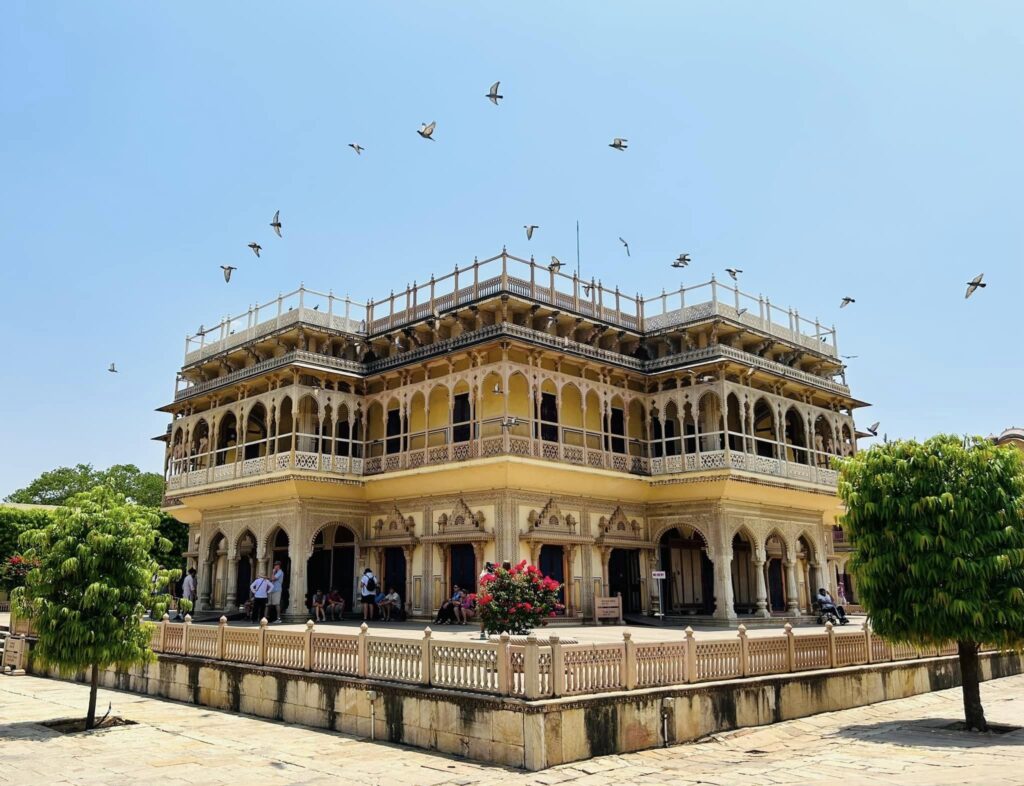

Day 5: Experience Jaipur with all your senses
It’s worth getting up early, because another masterpiece of Mughal architecture awaits you: the imposing Amber Fort, which stands on a steep mountain slope north of Jaipur. In the jeep, you will drive past the artistically designed Mughal Garden up the winding cobblestone path to the main gate of the complex. Behind it, you will find the public audience hall, the magnificent Ganesha Gate and the Palace of Mirrors. On the way back to the city, you will stop at the “Palace of the Winds“. Jaipur itself also knows how to impress with its magnificent architecture. You will visit the magnificent city palace, which bears witness to an era of abundance and is still partly used as the residence of the former Maharaja. A short walk away, the Jantar Mantar Observatory awaits you with soothing peace. The accuracy of the instruments is still impressive. After all the architectural wonders, are you hungry and in the mood for some homemade Indian food? Perfect, because your friendly hosts are already waiting for you at your hotel for a short cooking class. You can chat in a cozy atmosphere over the meal that follows. Later, a special highlight awaits you: a screening in India’s largest cinema, the Raj Mandir cinema. Overnight stay in Jaipur.
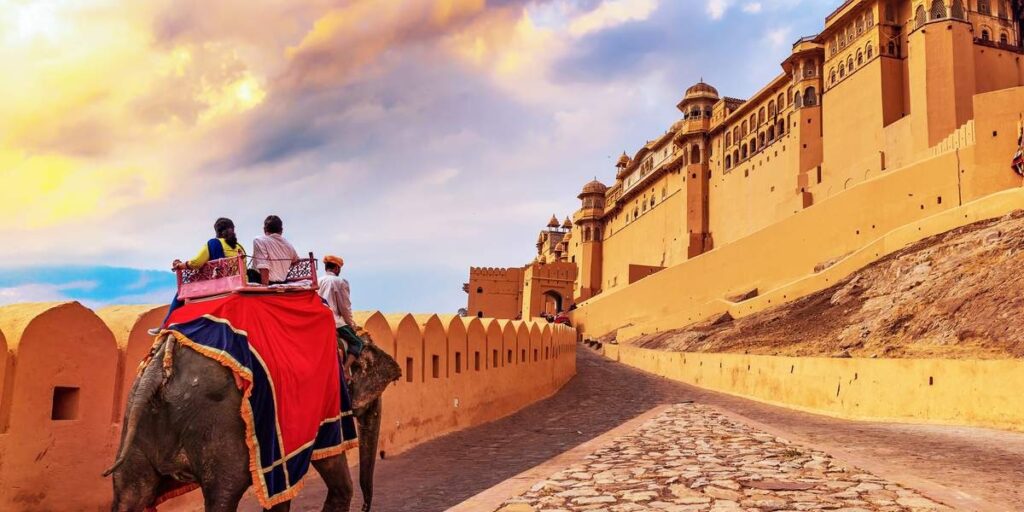

Day 6: Jodhpur, the “Blue City”
From the “Pink City” of Jaipur, you continue to Jodhpur, which is also called the “Blue City” because of the color of its houses. It was founded in 1459 by Rao Jodha, a chief of the Rajput clan. After checking in at the hotel, the rest of the day is at your disposal. You will spend the next two nights in the charming boutique hotel The Raas Jodhpur, which is one of the most beautiful and luxurious hotels in the city. The surrounding alleys are perfect for exploring a little on your own. From the spacious, very modern rooms you have a breathtaking view of the mighty fort, which you can also enjoy with a sundowner at the pool bar. Or you can explore the side streets of Ek Minar Masjid with your tour guide. There you will be initiated into a traditional art that is particularly synonymous with Rajasthan: Bandhani art, also known as tie & dye. Learn more about the traditional and colorful Bandhani dyeing techniques that have been passed down from generation to generation. Overnight stay in The Raas Hotel Jodhpur.
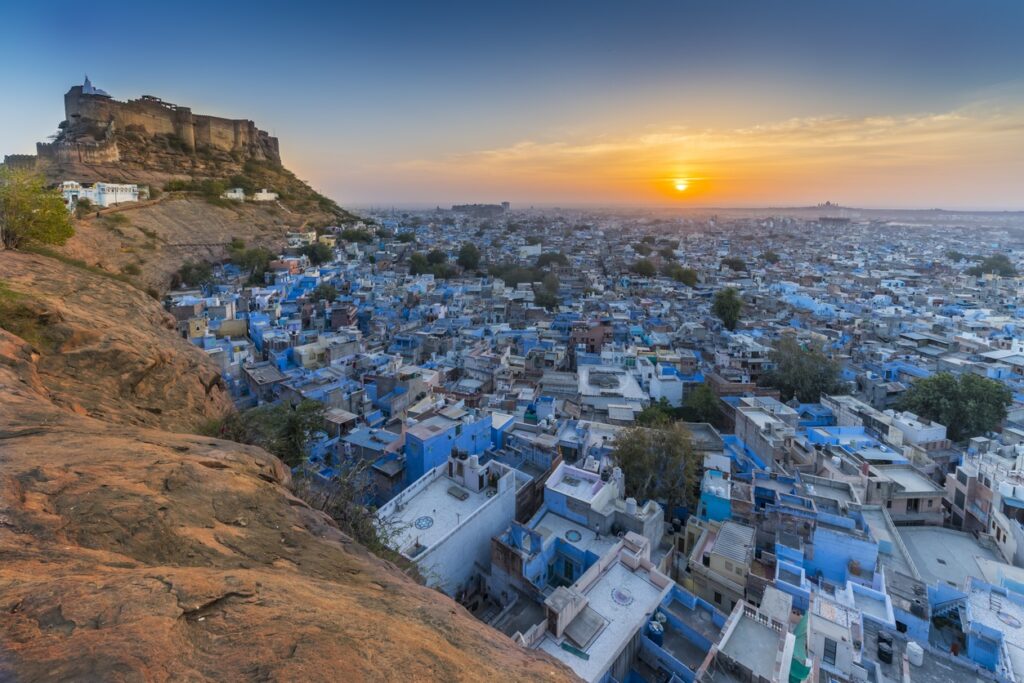
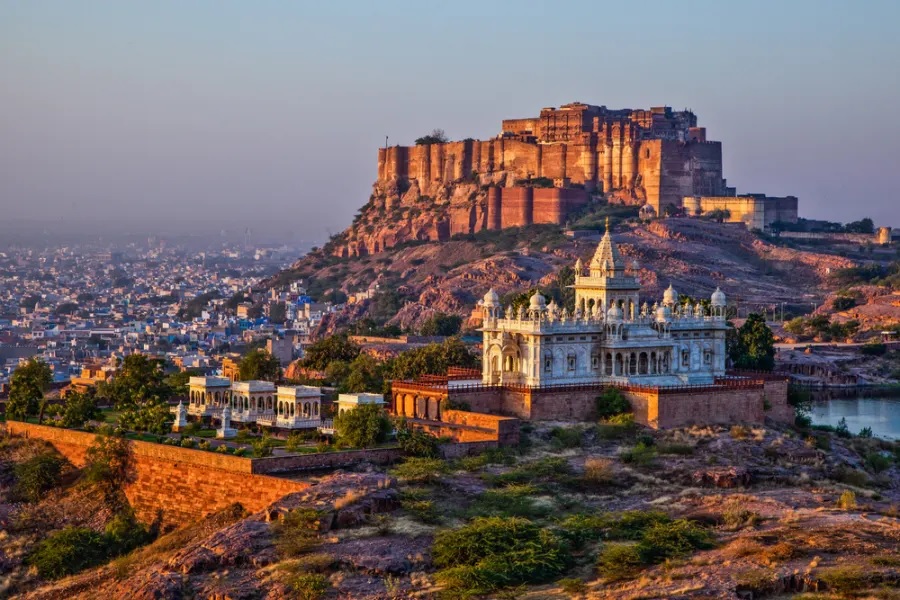
Day 7: Explore the most beautiful parts of Jodhpur
Today, you will devote entirely to exploring the most beautiful parts of Jodhpur. The city is dominated by the huge historical Meherangarh fort, which stands majestically on a rock 130 meters above the city and offers a spectacular view of the bright blue maze of houses at the foot of the hill. In view of its colossal dimensions, the British writer Rudyard Kipling described this place as a “work of giants”. At the entrance to the fort stands the marble mausoleum Jaswant Thada for the popular ruler Jaswant Singh II (1878-1895), who freed Jodhpur from robbers, set up irrigation systems and boosted the economy. After gaining an insight into the history of Jodhpur in the mighty buildings, you will experience the lively city life of today: From the Meherangarh Fort, a tuk-tuk driver will take you to the center of Jodhpur. The blue labyrinth of the old town has many surprises in store: Muslim dyers, puppet makers, traditional spice markets and much more. Overnight stay in The RAAS Hotel Jodhpur.


Day 8: The Om Banna motorcycle shrine
A new day, a new destination. Your journey now takes you to the charming village of Chanoud, about two hours’ drive from Jodhpur. On the way, you should not miss a stop at the Om Banna motorcycle shrine. Many believers come from near and far to pay their respects to a 350 CC Royal Enfield motorcycle on which, according to legend, Om Banna, the son of a local feudal lord, was killed in an accident. After being removed by the police, the motorcycle is said to have repeatedly returned to the scene of the accident. The locals will tell you stories about the wonders of Om Banna, whose spirit has been helping travelers in need since the disaster. Well protected, you finally arrive at Chanoud Garh, a magnificent 300-year-old property, your kingdom for the night. The beautiful mansion is still managed by the descendants of the royal family and is now an authentic heritage hotel with family connections. Everywhere you will feel the living history and feel almost at home thanks to the warmth of your hosts. After checking in, you will take a jeep ride through the area while the sun slowly sinks behind the Aravali hills. Overnight in Chanoud.
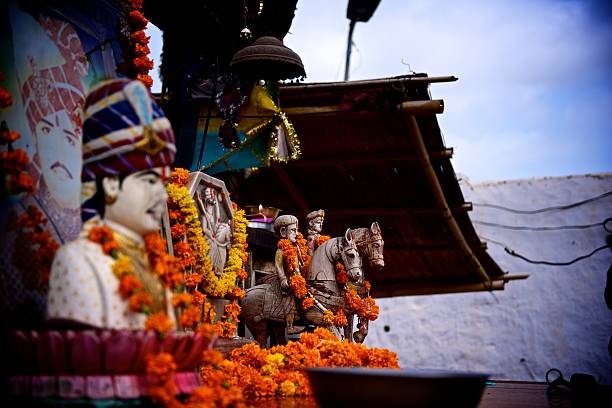

Day 9: The Jain Temples of Ranakpur
On the way to Udaipur, the next stop on your trip, you will stop at the Jain Temples of Ranakpur, a temple complex characterized by great attention to detail: a forest of columns supports the dome decorated with intricate geometric patterns and figures of goddesses. The temple has 29 rooms and 1,444 pillars, the architecture of which reflects Jain myths and symbolism. It is said that no two pillars are the same. Jainism is one of India’s ancient religions. Its teachings are based on finding the path to liberation and happiness by leading a non-violent and renunciative life. One of Udaipur’s best hotels awaits you on a hill with a magnificent view of the city, the lake and the wonderfully green hilly landscape. The design of the Heritage Renaissance Hotel Fateh Garh, which was listed in Conde Nast Traveler’s Hot List in 2009, is strongly influenced by the rich Rajasthani heritage and is almost as magnificent as the famous palaces of Rajasthan. After arriving, refresh yourself in the beautiful pool with a sensational view, admire the in-house vintage car collection or relax in the excellent Sansha Spa. Of course, culinary delights of the highest quality are also provided. Overnight stay in Udaipur.


Day 10: Cycling through Udaipur
Udaipur is dominated by its lakes – which is why the romantic city is also called the “Venice of the East”. The royal past is reflected in the rich ornaments on the doors of the houses in the old town, in the palaces, gardens and monuments. The small streets of Udaipur are particularly easy to explore by bike. Cycle along the lakes, temples and palaces with your guide and let yourself be drawn into the busy life of this beautiful city. You alone determine the pace of your tour. In the afternoon, you and your tour guide will visit the City Palace, the architectural highlight of Udaipur. One part of the winding building complex is open to the public as a museum, another serves as the residence of the incumbent head of the Mewar, and another houses a luxury hotel. Of course, in a city whose nickname includes the word “Venice”, you will also take a boat trip. You will leisurely sail in your private boat across Lake Pichola – the picturesque scenic center of Udaipur. The rest of the day is at your disposal to explore Udaipur on your own or relax in your beautiful hotel. Overnight stay in The Hotel Fatehgarh Udaipur.
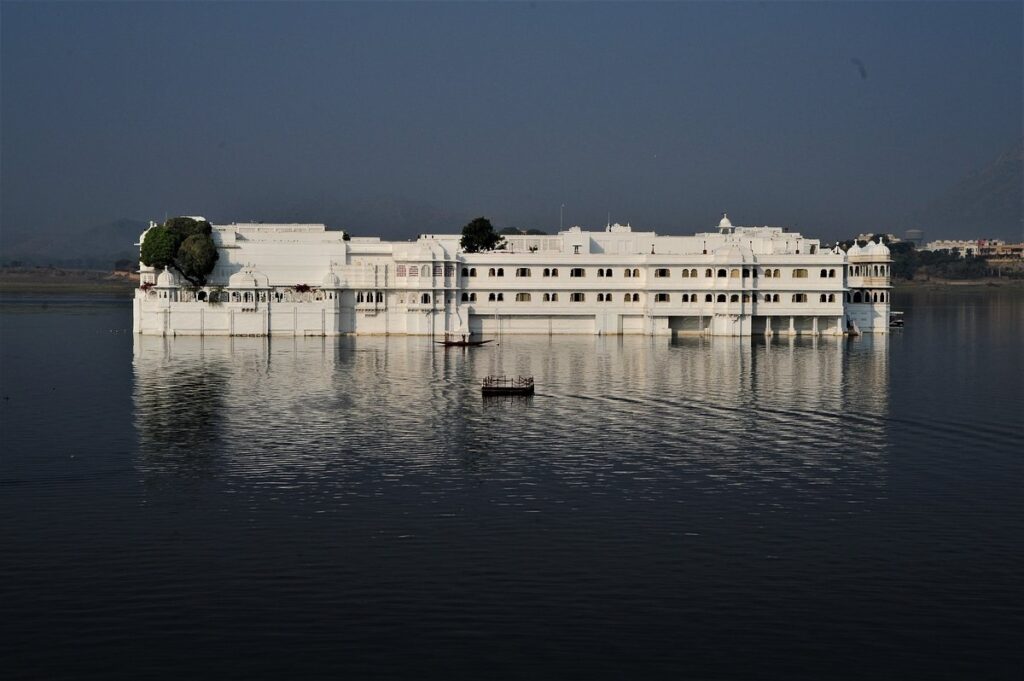
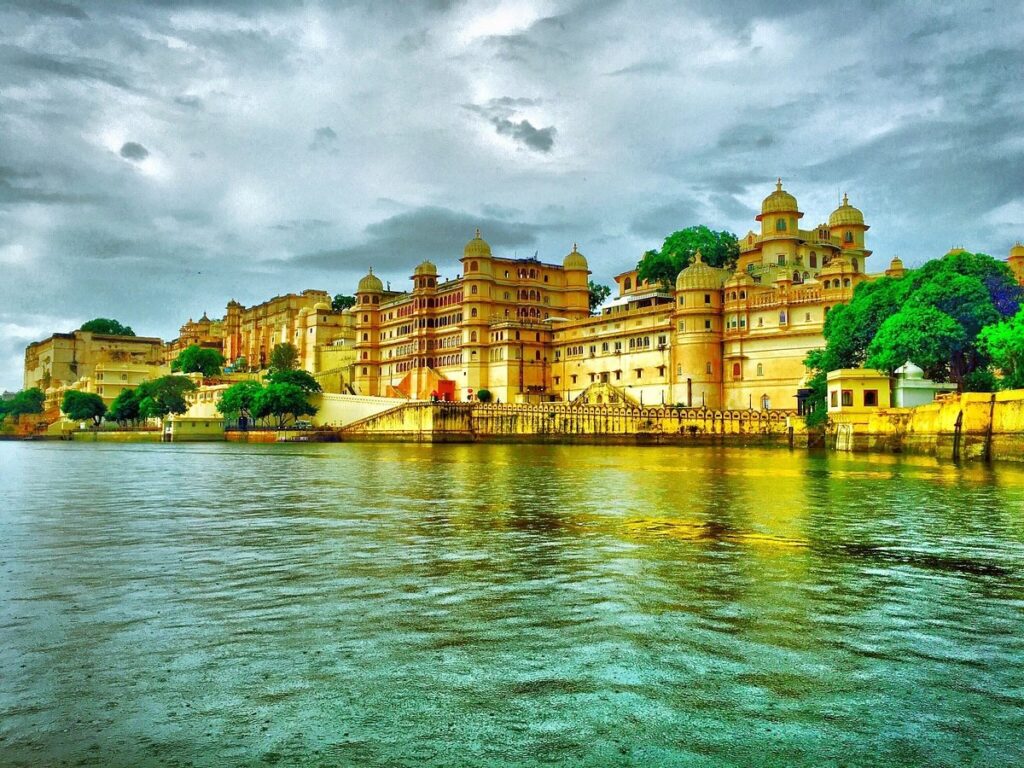
Day 11: Aarti ceremony in the holiest city of Hinduism: Varanasi
Today your journey takes you further to the city of Varanasi, which is considered the holiest site of Hinduism. Believers have been making pilgrimages here for more than 2,500 years. Varanasi is crowded, dirty and full of spirituality – pure India. Pilgrims bathe in the Ganges, cows stroll through the alleys, traders offer their goods for sale – here the country awaits you in an intoxicating authenticity. In the evening you will experience the spirituality of the place up close at a traditional Aarti ceremony at the holy Dasaswamedh Ghat on the banks of the Ganges. In a solemn atmosphere, believers offer small boats with burning lights and flowers. At Manikarnika Ghat, one of the two cremation ghats, you will witness the traditional cremation rituals that take place here. By burning the body, the soul can be freed, so the belief goes. Your hotel, the magnificent Brijrama Palace, is certainly the hotel highlight of your trip. The palace, decorated with Maratha art, is one of the oldest landmarks in Varanasi. It is a true gem of palace architecture and will enchant you with its beauty, the spectacular view of the Ganges, the exclusive service and its aura of magic and romance. Overnight stay in Brijrama Palace Varanasi.

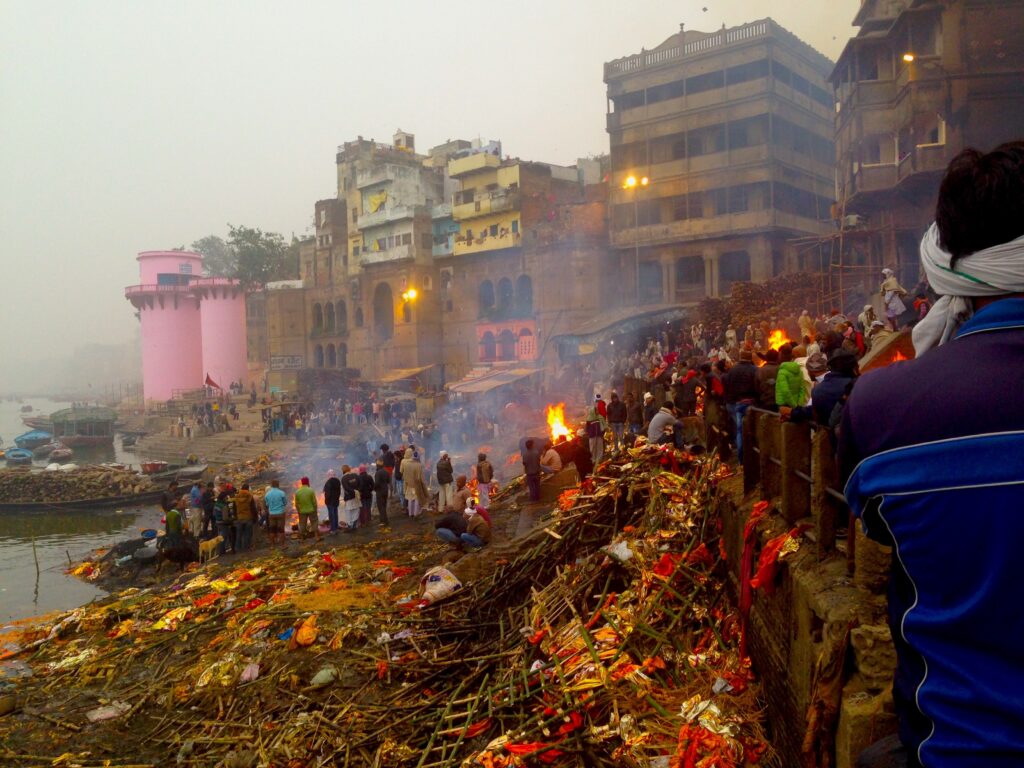
Day 12: Varanasi & Sarnath – Hinduism & Buddhism coexist
Now it is time to explore the fascinating city in daylight. Since ancient times, Varanasi has been a city of learning and the center of the great Sanskrit scholars. You will visit the oldest university in India, the Benares Hindu University. The New Vishvanath Temple, dedicated to the god Shiva, is also located on its grounds. On your way towards the old town, you will pass the Durga Temple, which is one of the mandatory stops for pilgrims. It is also known as the “Monkey Temple” because of the monkeys that live here. The neighboring, modern Tulsi Manas Temple is also one of the mandatory temples. Your tour guide will also show you the Bharat Mata Temple with a large marble relief depicting a map of India, as well as the Gyanvapi Mosque, built under the Mughal Emperor Aurangzeb from the stones of the destroyed old Vishvanath Temple. In the afternoon, you will drive from this holy city of Hinduism to the place where Buddhism was founded over 2,500 years ago: Sarnath. After Buddha found his enlightenment, he gave his first sermon here. In the Sarnath Museum, you will learn more about the origins of Buddhism before finally returning to Varanasi. Overnight stay in Brijrama Palace Varanasi.
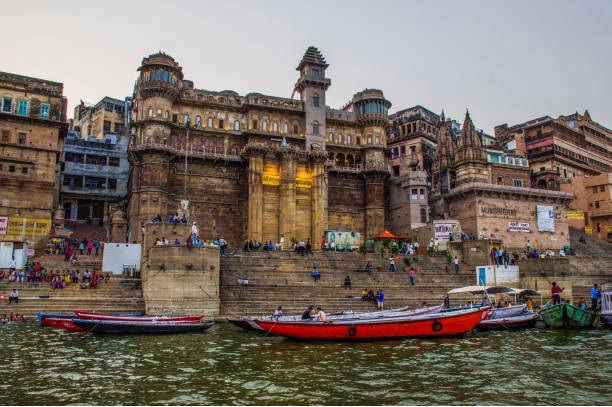
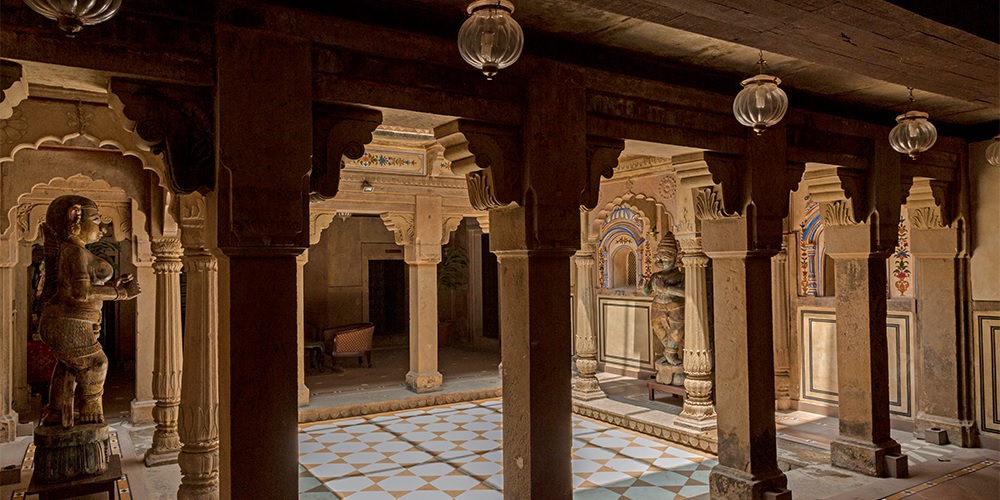
Day 13: Morning boat trip on the Ganges
You greet the morning with a boat trip on the Ganges. Thousands of believers come to the banks every morning to bath and pray. In front of the silhouettes of the temples and palaces in the morning light, they light candles that float across the river on banana leaves. Let the magical atmosphere work its magic on you. You then visit an Akhara, a wrestling arena, where you can watch wrestlers training. Akharas have long been an integral part of Varanasi’s culture, and the fighters trained here have already won numerous tournaments in the North Indian, Persian-influenced fighting style outside the city. Later, you set off for a stroll through the bazaars in the northern part of the old town. Only a few tourists get lost here. A mistake – because here you will find hidden treasures of Varanasi: Small alleys take you to the holy quarter of Varanasi, where the oldest buildings in the city are located. During your foray with an English-speaking local, you will catch a glimpse of the shops and temples, and see people who have not left their neighborhood for years. Your route will take you to one of the quietest parts of the city, where the great mystic Kabir wrote his poetry on the river bank. The rest of the day is then at your leisure. Overnight stay in Brijarama Palace Varanasi.
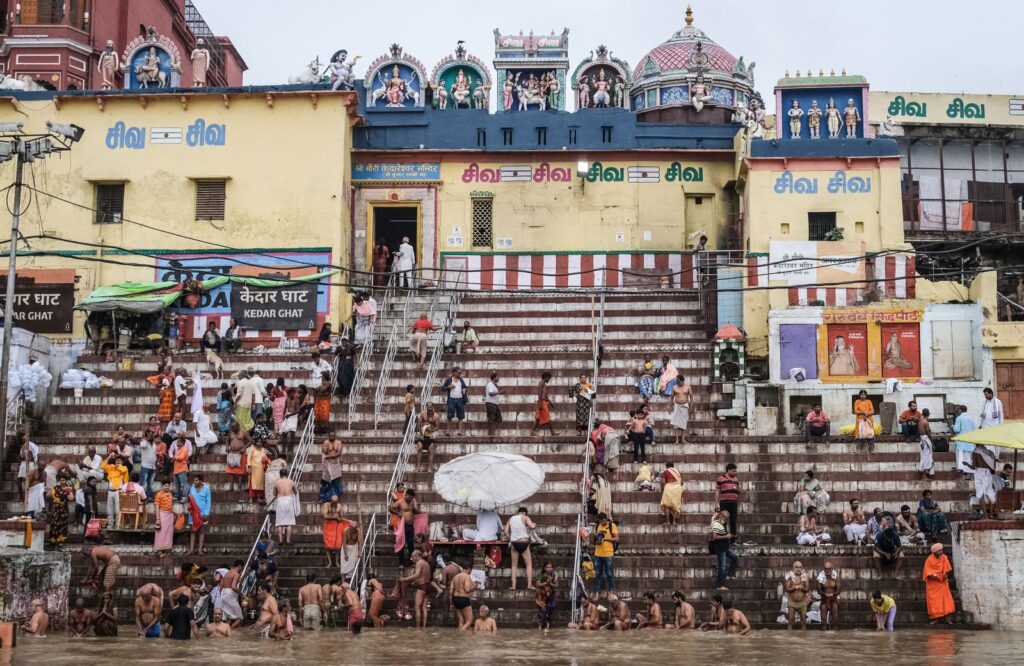
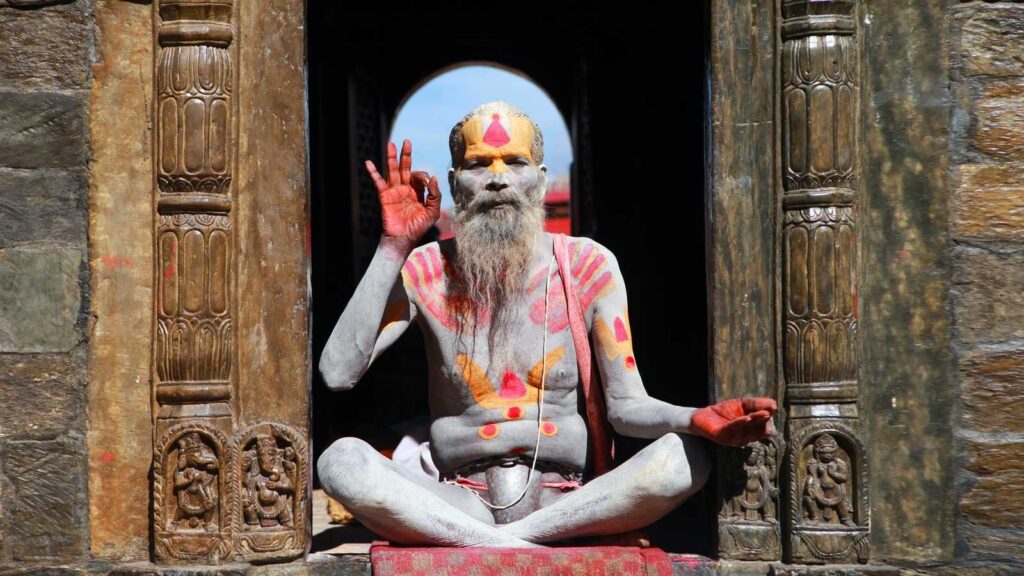
Day 14: Goodbye India
When you reach the end of your trip, you will start your return with many new impressions of this country of contrasts. Your driver will take you to the airport, from where you will first take a flight back to Delhi. There you will finally say goodbye to India. Who knows, maybe you will come back one day. Because this immense country still has many wonders in store for you.